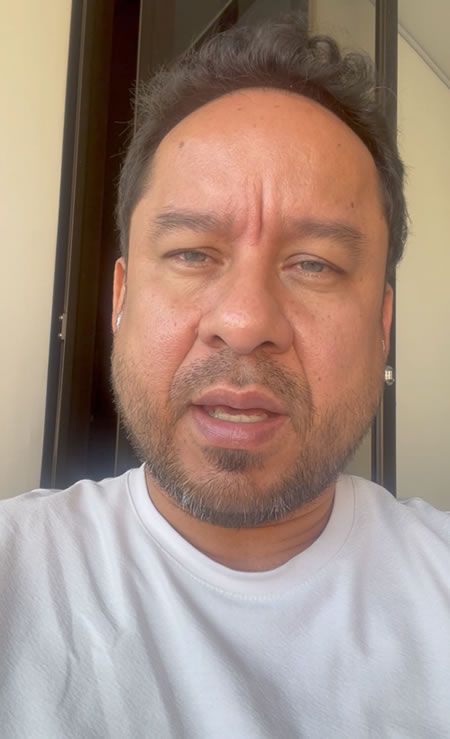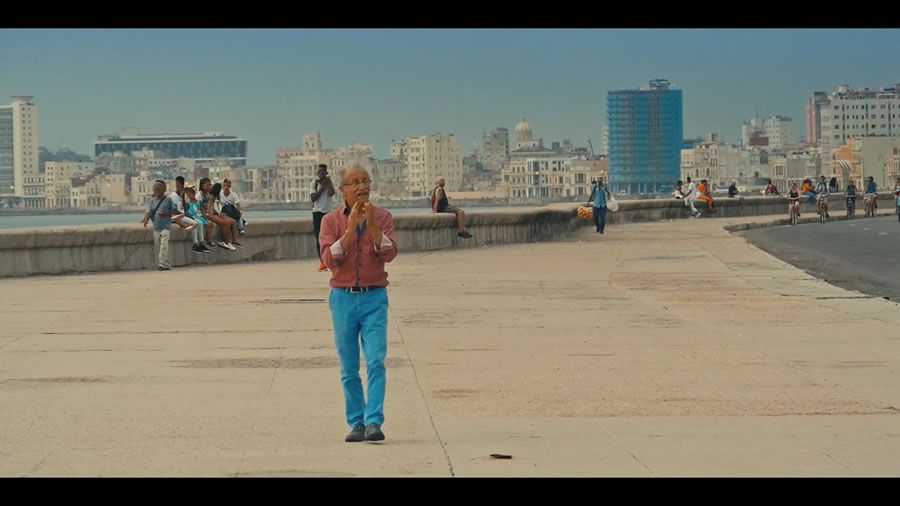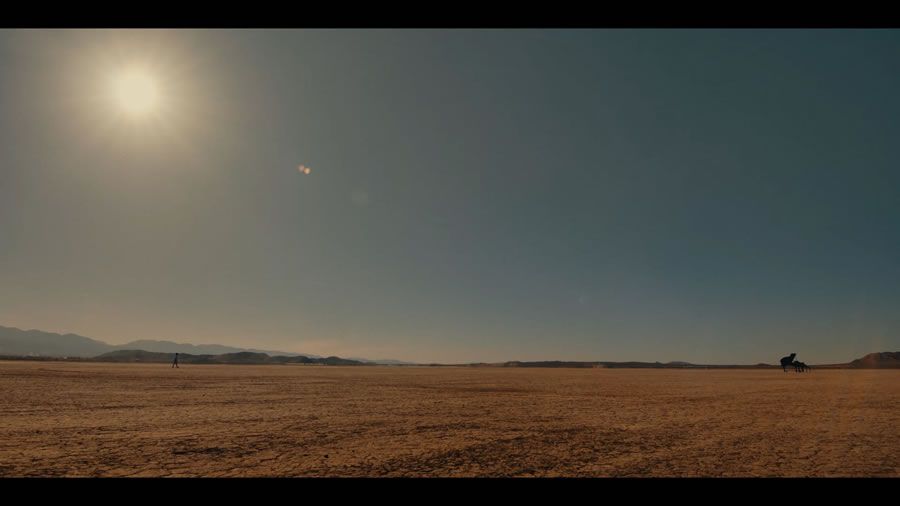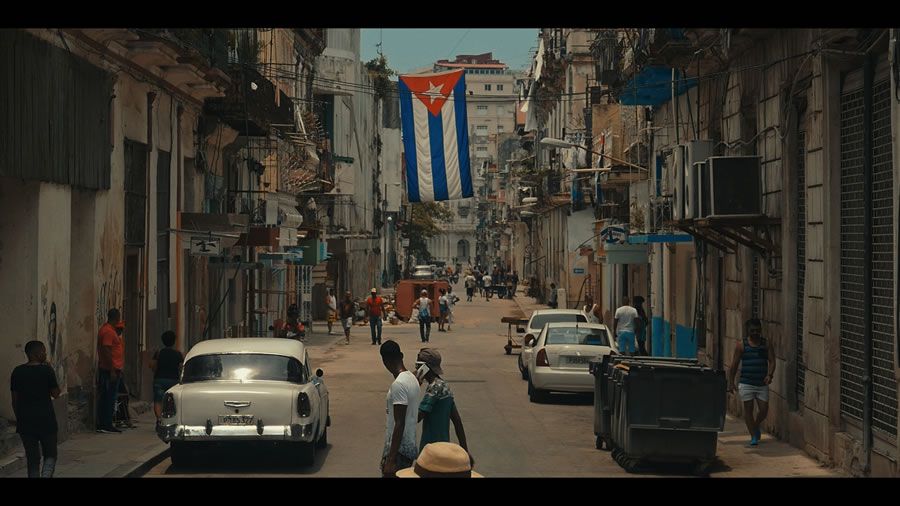09/30/2023
Edy Martínez and His Legacy in 'Viva Edy! The Story of an Indestructible Music': Interview with Carlos Ospina
By Sandra M Ríos U
Twitter: @sandritamrios
A documentary that is a must-see for music enthusiasts is currently in theaters. After nearly ten years in the making, director Carlos Ospina presents his tribute to the Colombian pianist, arranger, percussionist, and composer Edy Martínez, a pivotal figure in Latin music who breathed new life into salsa by merging it with jazz, giving it a distinct and recognizable signature that was appreciated, imitated, and celebrated by fellow musicians, genre experts, and fans.
Throughout his more than 50-year career, which began at a very young age thanks to his parents and self-taught learning, Edy Martínez collaborated with legendary figures such as Leandro "el gato" Barbieri, Tito Puente, Tito Rodríguez, Eddie Palmieri, Mongo Santamaría, and Ray Barreto. Ospina's film allows us to fully understand the legacy of this artist and discover a man devoid of ego, possessed of admirable humility.
"Viva Edy! The Story of an Indestructible Music" takes viewers on a journey through countries, places, and pivotal moments, with numerous testimonials and anecdotes from renowned musicians shedding light on his career and rise. It also explores the idea of the artist's solitude and the reach of dreams in a dreamlike and mythological way.
- The film includes scenes that reveal it was shot during the pandemic. Did this period of lockdown and precautions give impetus to its production?

Not really. This documentary has been in the works for approximately nine years, during which I had been researching the maestro, recording him, attending music lover gatherings, jazz festivals, and his honorary doctorate ceremony at the University of Nariño, among other events. However, during the pandemic, Telepacífico was planning to make a documentary about the tennis players Farah and Cabal, but one of them contracted Covid-19, causing the project to fall through. They then called me to collaborate because they knew I was working on something related to Edy. Thanks to their support, we were able to travel to New York and Los Angeles to record interviews with musicians from the golden era of the seventies who had played with him or knew him. We traveled during the peak of the pandemic when vaccines were not yet available, so it was indeed an act of courage and belief in the project, as it was challenging to capture some shots.
- Could you elaborate on which specific challenges you faced during filming?
For instance, there are scenes in Manhattan that appear somewhat deserted, and unfortunately, we had several interviews fall through, including some that were crucial, such as Larry Harlow's and Oreste Vilató's in California. The families were hesitant to let them go out due to their age and the pandemic-related paranoia.
- I understand you have extensive experience in making music videos and an interest in Latin rhythms. How did Edy Martínez come onto your radar, and at what point did you decide to pay tribute to him?
When I met Edy, I had already made a short film. At that time, I had three short films under my belt. I'm a passionate cinephile, and I'm self-taught in my craft, which is something I shared with Edy, who was a self-taught musician. This documentary happened quite organically. I met him one evening at the La Topa Tolondra nightclub in Cali, I remember it was a Thursday. Immediately, I told him, "Maestro, wait for me a moment, I'm going to my place to get my camera." I started taking photos and recording him, and that's how I began following him. Before I knew it, I had gathered a wealth of interesting material, and I realized that I had inadvertently started working on a documentary.
- How was the process of gathering interviews with musicians and music enthusiasts who share their testimonials and anecdotes about Edy's achievements, and how long did it take?
The main interviews that give substance and strength to the documentary took about four years to compile because there are other recorded elements that contribute to the narrative thread, such as the new work of the maestro recorded at Egrem Studios in Cuba, where "El Tosco" [José Luis Cortés], the recently deceased orchestra director who formed the band for that recording, makes an appearance. This section covers what happened in Cuba. Then there's the part in Puerto Rico, where I interviewed musicians of the caliber of Bobby Valentín, Willie Rosario, and Luis Perico Ortiz. The final interviews took place in New York, featuring figures like Alberto Santiago, Tito Allen, Orlando Godoy (a close friend of Edy), and Gilberto "El Pulpo" Colón. In Los Angeles, we met with Oscar Hernández, and in Las Vegas, we interviewed Johnny "Dandy" Rodríguez, among other musicians who appear in the film.

- The documentary touches upon the theme of the artist's solitude and incorporates a recurring dream as a metaphor. Could you discuss how you integrated these elements into the film, which has a very artistic quality?
Although he never admitted it openly, I noticed that Edy was somewhat isolated, deeply immersed in his music. Including the theme of solitude in the documentary added value to it. The dreamlike aspect happened somewhat by chance because Edy's life has a certain magical quality, and I didn't want it to be a flat narrative. I don't want to spoil it, but the image of the planet Mars on the poster is not coincidental, and those who watch the film will understand its significance.
- Another narrative resource in the documentary is the beautiful animation. Who created the animations?
Everything was done by a team from Cali. Alexander Salgado was the animation director, and the team of illustrators included Juan David Mendieta and John David Avendaño.
- There are fascinating anecdotes about Edy Martínez's career and contributions to salsa, such as his involvement with Fania and Ángel Canales. Could you share some insights into these stories as a teaser for viewers who haven't seen the film yet?
In 1966, Edy recorded the first album with Barreto, titled "El Criollo," which is highly regarded by music enthusiasts. From that album came a song with Edy's arrangements called "Trompeta y Trombón." What Pacheco and Fania did was appropriate the song without his authorization or approval, turning it into a delicate issue. Eventually, it became Fania's signature tune and was used in their film "Our Latin Thing," which was a major success and had a special screening in Cali.
Before I met Edy, I had heard an urban legend about Ángel Canales' album "Sabor," where all the tracks were arranged by Edy Martínez, except for "El Sabor de los Rumberos Nuevos." All the songs on that album were very popular. Edy was supposed to play on that album, but he went to Europe with Gato Barbieri, so he recommended another Colombian, John Madrid, to take his place. The legend claimed that Ángel Canales never paid Edy, which is not true. However, the story goes that Canales didn't have a great voice, and it was Edy's arrangements that provided the foundation for him to sound good. According to Martínez, Canales may never have had the time to express his gratitude.
- The contributions of pianist Gilberto Colón Jr. are essential to enriching the documentary. How did you connect with him?
I got Gilberto "El Pulpo" Colón's contact information, called him, and there was an instant trust between us. I had done some research and knew that he was a fan of Edy and that, in a way, the maestro had been a guiding light for him. It's worth mentioning that "El Pulpo" was the pianist for Héctor Lavoe's orchestra. We talked on the phone a lot, and he thought it was great that I was entrusted with telling the life story of a maestro who had been important to him, not just as a piano teacher and musician but also as a personal friend. "El Pulpo" is quite a character (laughs). The interview I conducted with him lasted over an hour, during which he shared some incredible stories that will surely make viewers laugh. He's a very jovial and cheerful person. I believe that he and Orlando are crucial pieces of this documentary. "El Pulpo" was closely involved in Edy Martínez's journey, and unlike other musicians who are reserved and cautious in their comments due to modesty and seriousness, "El Pulpo" speaks candidly and openly about these topics, adding significant value to the film.

- The tribute while Edy is still alive is a powerful message in the documentary, as is the discovery of the humility of a genius who was mostly self-taught. Are there any other messages that you intended to convey through the film?
Well, there are several things. The cliché would be to say that dreams can come true, but what struck me was how a child, together with his brother Juan, learned to read and transcribe classical music scores empirically. When he was a child, his father shared classical and Creole music records with him, back when salsa didn't exist, during the era of bands like Arsenio, Tito Rodríguez, Tito Puente, or Machito. He arrived in New York as a teenager to play with the very idols he had seen on album covers. That aspect fascinated me, and I found it beautiful.
There's something I hadn't planned, but people have found their own interpretation of the film when they watch it. They've talked to me about the greatness of Edy, his remarkable journey, and his significant contribution to the music we're so passionate about, all intertwined with his humility. Personally, the maestro has had a profound impact on me, not just because of the film but also through getting to know him and spending time with him. It's his simplicity and humility that stand out, qualities that are so scarce nowadays. Perhaps this held him back from receiving more recognition because he was always behind the scenes, like the architect.

- What has happened with your filmmaking career after completing this documentary?
I've just finished shooting a new short film, and I've also begun working on my debut feature film, with the intention of shooting it next year.
<< Go to Spanish version
